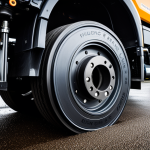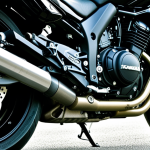Understanding Valve Timing Fundamentals for the Yamaha YZF-R1
Valve timing is a cornerstone of engine performance principles. It controls when the intake and exhaust valves open and close, directly affecting power output and efficiency. In the Yamaha YZF-R1, precise valve timing ensures the engine breathes optimally, maximizing horsepower and throttle response.
The YZF-R1’s engine uses a four-cylinder, four-stroke configuration, where the camshaft and crankshaft must align perfectly. The camshaft operates the valves, and its timing relative to the crankshaft dictates valve events. If timing is off, it causes poor combustion, reduced power, or even engine damage.
Also to read : Ultimate Guide to Replacing the Steering Damper on Your Honda VTR1000F: A Comprehensive and Engaging Resource for Enthusiasts
Key terms to know include intake valves, which allow air-fuel mixture in, and exhaust valves, which let burnt gases exit. Valve timing theory explains how opening these at the right intervals enables optimal cylinder filling and scavenging. For example, slightly advancing the intake valve timing can boost low-end torque, while retarding it favors high RPM power.
Mastering Yamaha YZF-R1 valve timing basics gives insight into tuning potential. Correctly syncing the camshaft and valves with the crankshaft is critical for achieving the exceptional engine performance this superbike is known for.
Also read : Revamp Your Kawasaki ZZR1400: The Ultimate Guide to Upgrading Foot Pegs for an Enhanced Ride Experience
Preparing for Valve Timing Optimization
Before beginning any YZF-R1 tuning preparation, gathering the correct tools and information is crucial for safe and precise valve timing adjustments. Essential tools include a torque wrench, feeler gauges, camshaft holding tools, and a service manual with detailed Yamaha YZF-R1 valve timing basics and OEM specifications. These help ensure exact measurements and prevent damage during the process.
Setting up a clean, well-lit workspace minimizes errors and maintains safety. Wearing gloves and eye protection is recommended, as is carefully disconnecting the battery to avoid electrical hazards when accessing engine components. Valve adjustment safety hinges on following the manufacturer’s torque values and adjustment sequences explicitly.
Understanding and interpreting OEM specifications enables accurate valve clearance settings and proper camshaft-to-crankshaft alignment. These specs guide the position of timing marks and the degree of valve lash. Mastery of these details reflects core engine performance principles by securing optimal combustion and prolonging engine life. Proper preparation sets the foundation for successful valve timing work that maximizes Yamaha YZF-R1 valve timing basics.
Step-by-Step Valve Timing Adjustment on the Yamaha YZF-R1
Precision in the YZF-R1 valve adjustment procedure starts with accessing the camshaft and timing components. Removing the valve cover exposes the camshaft sprockets and timing chain, critical for verifying correct alignment. The next step is setting and verifying Top Dead Center (TDC), where the piston reaches its highest point in the cylinder. Accurate TDC is confirmed by aligning the crankshaft’s timing marks per OEM specifications, ensuring the camshaft and crankshaft are synced.
Once TDC is established, adjusting valve timing using OEM marks is essential. These marks indicate exact camshaft positioning relative to the crankshaft. Aligning these according to Yamaha YZF-R1 valve timing basics guarantees valve events occur at optimal intervals. This stage also involves setting valve clearance precisely with feeler gauges, matching factory tolerances critical for combustion efficiency.
Finally, re-check valve clearances after adjustment and carefully reassemble components, tightening bolts to prescribed torque. Each step follows engine performance principles to maintain peak power output, prevent valve damage, and extend engine longevity. Diligence here ensures the YZF-R1 continues to deliver its renowned superbike performance.
Step-by-Step Valve Timing Adjustment on the Yamaha YZF-R1
Precise YZF-R1 valve adjustment procedure begins with careful preparation of camshaft components. First, remove necessary engine covers to access the camshaft and timing marks. Verify the engine is at Top Dead Center (TDC) by aligning the crankshaft pulley marks as per Yamaha YZF-R1 valve timing basics. Confirming TDC is crucial because it ensures the camshaft and crankshaft synchronization is accurate for valve adjustment.
Next, use OEM timing marks on the camshaft sprockets for proper alignment. These marks guide the camshaft setup to avoid misalignment, which can cause poor combustion or damage. Adjusting valve timing involves loosening camshaft bolts slightly, then rotating the camshaft to align marks precisely with the crankshaft at TDC.
Then, proceed to valve clearance setting using feeler gauges. Measuring the gap between cam lobes and valve tappets ensures clearance matches OEM specs, a critical aspect of valve timing theory that impacts engine breathing efficiency and performance. After adjustments, torque bolts to specified values and recheck clearances to confirm stability before reassembly. This meticulous process improves Yamaha YZF-R1 performance by optimizing valve timing accuracy.
YZF-R1-Specific Tips for Peak Performance
Fine-tuning valve timing on the Yamaha YZF-R1 requires attention to model-specific details to extract maximum engine potential. One key tip involves recognizing the precise tolerances of the YZF-R1 camshaft sprockets and sensitive timing marks, which differ slightly between production years. This affects cam timing accuracy and, ultimately, power delivery.
Performance enhancement often benefits from aftermarket cam timing kits that provide adjustable cam sprockets. These kits allow riders to advance or retard timing beyond stock Yamaha YZF-R1 valve timing basics, tailoring power curves to specific riding styles—whether emphasizing low-end torque or high-RPM horsepower.
For fine-tuning, slight adjustments to intake valve timing can significantly impact throttle response and torque. Advancing intake timing boosts low-speed power, while retarding it favors top-end performance. Combining this with precise valve clearance setting ensures optimal combustion as outlined in core engine performance principles.
Understanding these advanced YZF-R1 setup strategies empowers riders and mechanics to optimize engine output safely while preserving longevity. Approaching valve timing with this nuanced perspective secures peak performance and enhances the superbike’s renowned responsiveness.
Understanding Valve Timing Fundamentals for the Yamaha YZF-R1
Valve timing fundamentally governs engine performance principles by controlling when the intake and exhaust valves open and close within each cycle. On the Yamaha YZF-R1, mastering valve timing theory ensures the engine efficiently intakes the air-fuel mixture and expels exhaust gases, directly influencing power output and throttle response.
The YZF-R1 engine features a four-cylinder, four-stroke design, where precise camshaft and crankshaft alignment is critical. The camshaft actuates the intake and exhaust valves, and its timing relative to the crankshaft dictates optimal valve events. Misalignment leads to poor combustion, reduced efficiency, and increased wear.
Key terms include the intake valves, which open to admit the air-fuel mixture, and exhaust valves, which release burnt gases. Valve timing theory explains how advancing or retarding valve events affects performance curves: advancing intake timing improves low-end torque, while retarding it benefits high RPM power.
Grasping these Yamaha YZF-R1 valve timing basics provides a foundation to understand tuning potential and maintain the superbike’s signature engine efficiency. This understanding bridges core engine principles with practical valve timing adjustments.
Preparing for Valve Timing Optimization
Proper YZF-R1 tuning preparation is vital for precise valve timing adjustments. Begin by assembling recommended tools: a torque wrench ensures proper bolt tightening, feeler gauges measure valve clearances accurately, and camshaft holding tools are essential for maintaining proper alignment during adjustment. Following valve adjustment safety practices minimizes risks. This includes working in a clean, well-lit environment, wearing gloves and eye protection, and disconnecting the battery to prevent electrical hazards.
Understanding and interpreting OEM specifications is equally critical. These detail exact valve lash tolerances, timing mark positions, and torque values indispensable for accurate valve timing theory application. Misreading specs can lead to improper camshaft setup and compromised engine performance principles.
Preparation sets the foundation for effective valve timing work. Taking time to organize tools and thoroughly review Yamaha YZF-R1 valve timing basics reduces errors, protects engine components, and enhances tuning success. This comprehensive approach ensures adjustments optimize combustion efficiency and uphold the engine’s longevity.
Preparing for Valve Timing Optimization
Preparing for valve timing work on the Yamaha YZF-R1 demands thorough YZF-R1 tuning preparation to ensure accurate and safe adjustments. Essential tools include a precision torque wrench, feeler gauges for exact valve clearance measurement, camshaft locking tools to hold timing marks securely, and a detailed service manual with Yamaha YZF-R1 valve timing basics. These tools uphold strict valve adjustment safety, mitigating risks of engine damage during timing adjustments.
Setting up a clean, well-lit workspace is equally important for precision and safety. Protective gloves and eye gear help reduce injury when handling sharp engine parts. Disconnecting the battery prevents accidental shorts when removing covers. Understanding and interpreting OEM specifications from the manual is vital; these define exact valve lash tolerances and camshaft alignment points, critical to following engine performance principles.
Following the exact torque values and screw sequences listed in the manual ensures bolts are neither too loose nor overtightened. This combination of proper tools, environment, and attention to OEM specs forms the foundation for effective YZF-R1 valve timing optimization while prioritizing safety.
Troubleshooting and Verifying Valve Timing Adjustments
After completing the YZF-R1 valve adjustment procedure, verifying correct valve timing is essential to prevent engine issues. Common signs of incorrect valve timing include rough idle, misfires, decreased power, and unusual engine noises. These symptoms signal misalignment between camshaft and crankshaft, compromising combustion efficiency and harming overall performance.
To troubleshoot, start with a visual inspection—ensure all timing marks remain precisely aligned at Top Dead Center (TDC). Next, remeasure valve clearance settings using feeler gauges to confirm they still meet Yamaha YZF-R1 valve timing basics and OEM specifications. Improper clearances can cause valves to open or close out of sync, triggering misfires or power loss.
Engine diagnostics on the YZF-R1 often employ specialized tools like compression testers and timing lights. Compression tests evaluate cylinder sealing efficiency, revealing issues caused by valve timing errors. Timing lights detect discrepancies in ignition timing, indirectly confirming valve event accuracy.
Systematic verification and troubleshooting uphold engine performance principles by ensuring valve timing theory is correctly applied. Corrective actions secure the superbike’s power delivery and reliability—key factors for riders focused on both performance and engine longevity.




